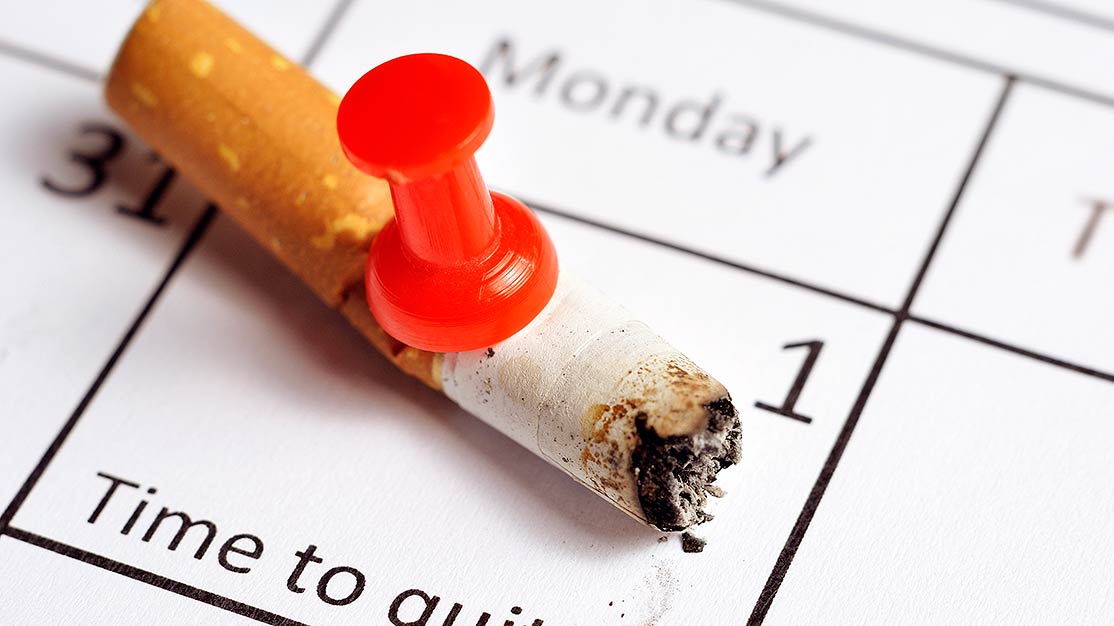“Quit Smoking”
Ways to Quit Smoking: Cold Turkey, Nicotine Replacement Therapy, and More

You’re ready to kick the habit. That’s great!
There are different ways to quit smoking. Some work better than others. The best plan is the one you can stick with. Consider which of these would work for you:
1. Cold turkey (no outside help). About 90% of people who try to quit smoking do it without outside support — no aids, therapy, or medicine. Although most people try to quit this way, it’s not the most effective and successful method. Only between 4% to 7% are able to quit by going cold turkey alone.
2. Behavioral therapy. You’ll work with a counselor to find ways not to smoke. Together, you’ll find your triggers (such as emotions or situations that make you want to smoke) and make a plan to get through cravings.
3. Nicotine replacement therapy. Nicotine gum, patches, inhalers, sprays, and lozenges are nicotine replacement therapies. They work by giving you nicotine without using tobacco. You may be more likely to quit smoking if you use nicotine replacement therapy. If you’re younger than 18, you need to get your doctor’s permission to use it. This plan works best when you also get behavioral therapy and lots of support from friends and family.
4. Medicine. Some drugs, including Zyban and Chantix, are intended to help people quit smoking. Your doctor must prescribe these medications.
5. Combo treatments. saUsing a combination of treatment methods may raise your chances of quitting. For example, using both a nicotine patch and gum may be better than a patch alone. Other proven combos include behavioral therapy and nicotine replacement therapy, prescription medication with a nicotine patch, and nicotine patch and nicotine spray. The FDA has not yet approved using two types of nicotine replacement therapy at the me time, so be sure to talk with your doctor first to see if this is the right approach for you.
4 Rules for Quitting Smoking
1. Know your triggers and avoid them early on. Try to stay away from situations that normally make you feel like smoking, especially during the first 3 months. This is when you’re most likely to start smoking again.
2. Know that the first few days are the toughest. Especially if you’re quitting “cold turkey,” the first few days are the hardest. You’ll probably feel irritable, depressed, slow, and tired. Once you get past those first days, you’ll begin to feel normal (but still have cigarette cravings).
3. Don’t give in to your craving to smoke. Every time you don’t smoke when you have a craving, your chances of quitting successfully go up.
4. Try a new hobby with friends who don’t smoke. This makes success more likely.
When smoking is no longer something you do, it can change how you see yourself. As much as you want to quit smoking, you may be surprised to feel sad or miss it. That’s normal. Take care, though, if feeling sad usually makes you want to smoke.
How Hard Will It Be to Quit?
Everyone is different, and how tough it is depends on things such as:
- The number of cigarettes you smoke daily
- The number of people you spend time with who smoke (parents, friends, and co-workers)
- The reasons why you smoke (such as to control your weight, to fit in, or during certain social situations)
Focus on the benefits. Within hours of stopping cigarettes, your body starts to recover from the effects of nicotine and additives. Your blood pressure, heart rate, and body temperature — all of which are higher than they should be because of the nicotine in cigarettes — return to healthier levels. You can breathe easier. Poisonous carbon monoxide in your blood drops, so your blood can carry more oxygen.
No doubt about it: Quitting helps your whole body. It even helps your looks, as you’ll be less likely to get wrinkles when you’re still young. And you’ll save money, too.
Why Is Smoking So Addictive?
Blame nicotine, the main drug in tobacco, for your smoking addiction. Your brain quickly adapts to it and craves more and more to feel the way you used to feel with just one cigarette.
Over time, the brain learns to predict when you’re going to smoke a cigarette. You feel down and tired, so you think, “I need a cigarette,” and the cycle starts again.
It’s not just about brain chemistry. Certain situations make you want to smoke.
Everyone’s triggers are different. Yours might include the smell of cigarette smoke, having an ashtray next to you, seeing a carton of cigarettes at the store, having certain food or drinks, ending a good meal, or talking with someone with whom you normally smoke cigarettes. Sometimes just the way you feel (sad or happy) is a trigger. One of the biggest keys to quitting smoking is spotting the triggers that make you crave smoking and trying to avoid them.
What if I Start Smoking Again?
It’s called “relapse,” and it happens to a lot of people before they kick the habit for good.
Relapse is normal in strong addictions like smoking. If you relapse, try to smoke as little as possible until you’re ready to quit again. Stopping permanently is a process that might take some time. It’s worth it!
Reviewed by: Melinda Ratini, DO, MS on September 16, 2014.
Posted in Childhood, Grand-Children, Grandma, Todaywith no comments yet.
Leave a Reply